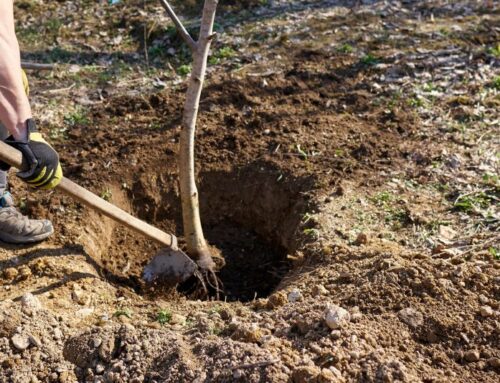Best practices in caring for your trees and how to plan now and for the future.
Author: Sarah Gaskin, Registered Consulting Arborist & Certified Arborist
I’m so glad trees have become trendy. Just look at all the trends! They have their own hashtags, celebrities are donating to tree planting causes, they are showing up as tattoos in pop culture and even cities are adopting programs to increase urban canopy health! It’s like everyone knows a little something more about trees in these modern times. Let’s face it, trees beautify our spaces, increase property value, and make us feel great being around them. This is the time of year when people are walking around their communities more and with so many people sheltered in place, a brief, socially distanced walk is an escape for some. This is another reason to pay even more attention to your environment and keep up your maintenance where possible.
With all of our contemporary interest in trees, it’s seems that we don’t pay attention to the care of our trees until they’re either dead, dying, diseased, or drop a limb. It’s important to know that being reactive to tree needs increases management expenses and makes annual budgeting difficult.
It’s essential to maintain the health of our urban forests and that starts with a management plan. Not just any old plan, but a good plan that includes an accurate tree inventory and detailed assessment.
Why is this so important? Because you can’t know what you need to do until you know what’s actually happening!
Below are best practices including what to look for, and what to consider in developing effective management plans.
Not all pruning is created equal
If you’ve requested a pruning proposal and receive bids that say “trim” on every tree, that should raise some eyebrows! I mean, you wouldn’t just go into a hair salon and ask for a “cut“, would you?
Most tree owners don’t know that there are several different kinds of pruning techniques used for different canopy conditions. Conditions vary from a simple clearance away from the building (Clearance Pruning), needing a heavy canopy reduction (Crown Reduction) or a more complex need for selective cuts to improve overall structure (Structural Pruning). Whatever it may be, each recommendation should be intentional with a goal in mind.
The wrong type of pruning can ruin a tree and over-pruning can cause it to produce a lot of unwanted new growth quickly. Consequences like these and others are why it’s so important to hire professionals who know what they are doing.
An interesting fact that many are unaware of is that the most important pruning stage is when the tree is young, aka “Young Tree Training”. Young Tree Training sets up a good structure for strong future growth. When done properly, it also reduces the need for pruning and mitigating hazards over the lifespan of the tree, saving unanticipated expenses in the future.
What NOT to do
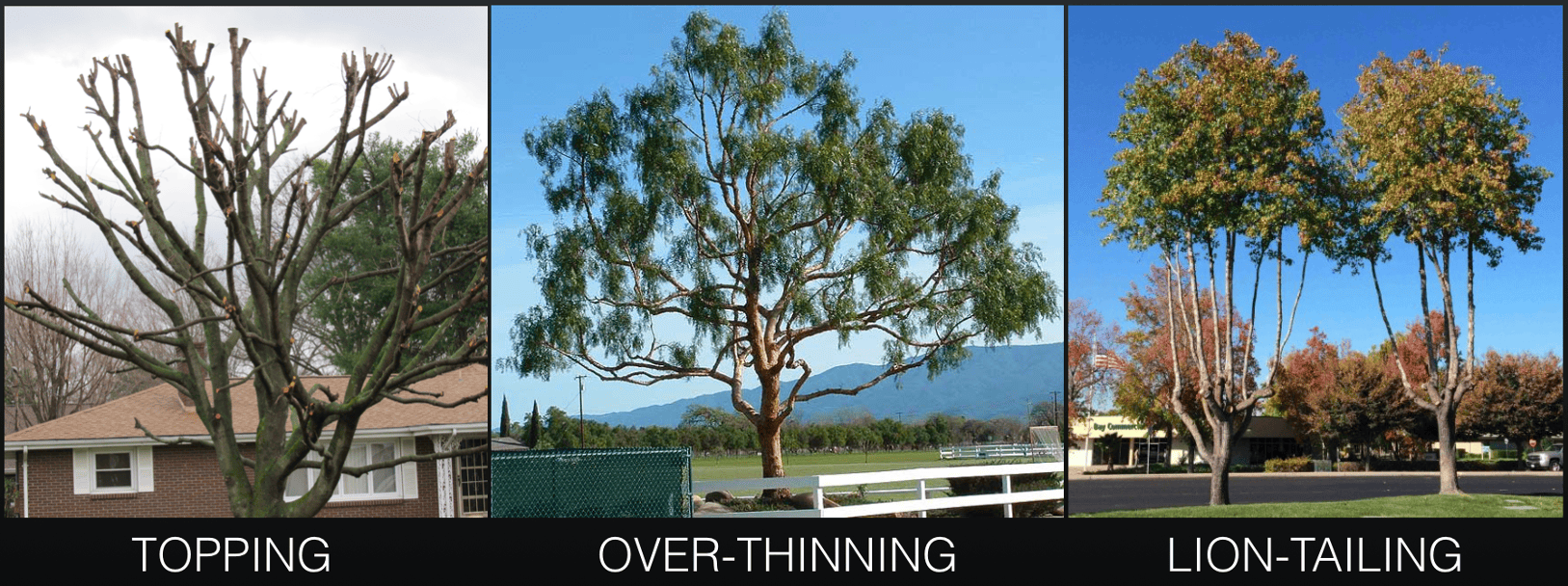
– Topping. It’s not only ugly, but it stresses the tree, ruins the structure, creates future hazards, and requires more frequent pruning. Avoid it at all costs with exception to rare cases where risk mitigation or habitat tree formation is your goal. Otherwise…don’t do it!
– Avoid over-thinning the interior of the tree. A good rule of thumb is not to remove more than 25% of a tree’s live wood. Removal of too many leaves can starve the tree, reduce growth, and make the tree unhealthy.
– Lion-tailing is similar to over-thinning but more drastic. It’s essentially the removal of all interior limbs with some foliage left at the end of the branches. It creates substantially weakened branches that may break easily in storms or under their own weight. It also reduces the tree’s ability to form interior foliage which is significantly important for some “next level” biological functions to occur properly in the tree.
The art of subtle pruning
When a tree has been pruned properly, a casual observer shouldn’t be able to notice. The result should appear natural…and that’s not an accident.
Here are a few examples of different pruning techniques:
Structural Pruning: The selective reduction of limbs with a goal to develop a strong central leader.
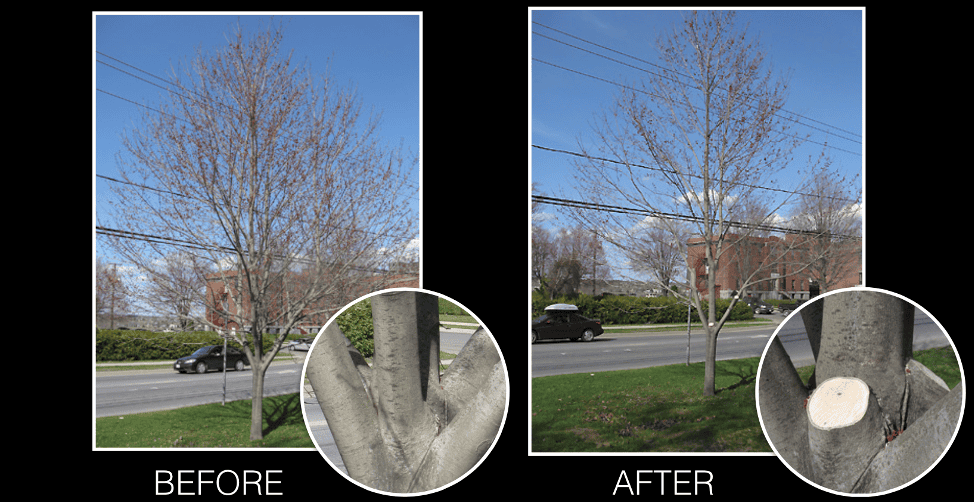
Crown Thin: Removal of selective branches to reduce canopy density.
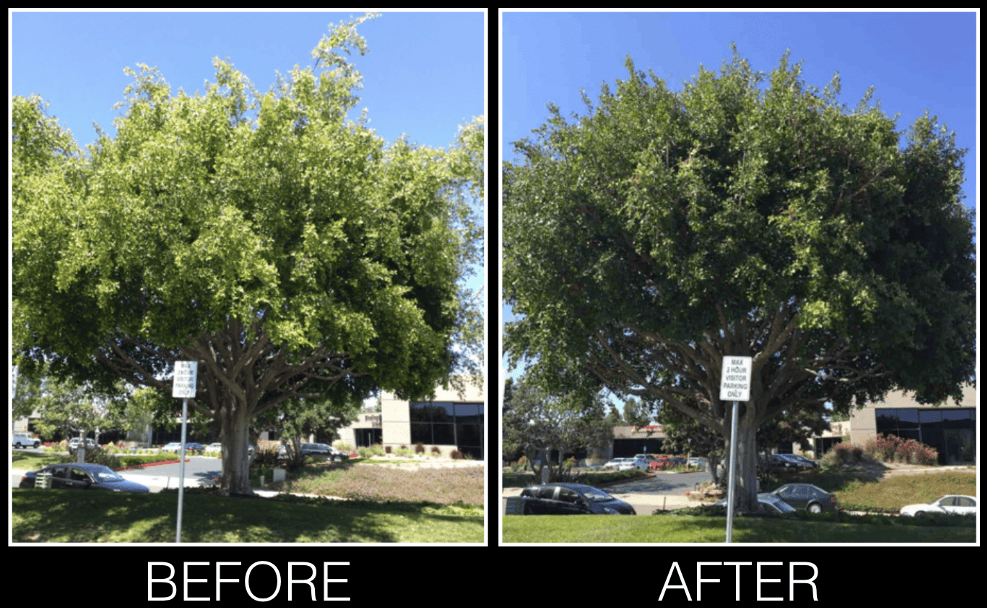
Crown Reduction: The reduction in height and/or spread of the canopy of a tree.
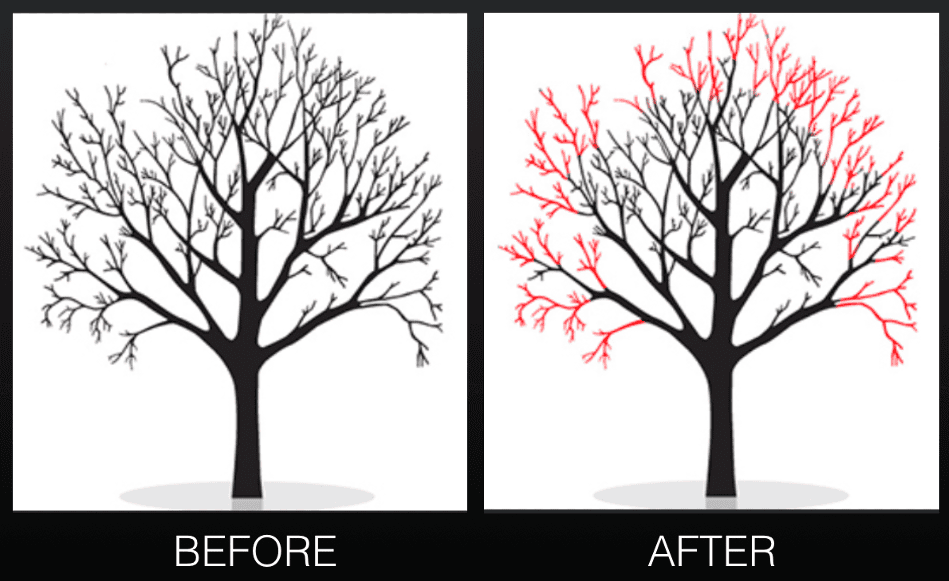
When and how often to prune
Routine maintenance pruning of dead or dying branches can be done at any time. A good time to prune living branches is late in the fall or early in the spring before the trees leaf out. It isn’t significantly harmful to prune outside of this timeframe, but the growth is maximized and wounds close faster when pruned at the aforementioned times. The type of species, maturity and health of the tree can create exceptions to this general rule.
Another rule of thumb is to have your trees on a 3-year pruning cycle, MAX. Some conifers and slower growing trees can be on a 5-year cycle, but should be evaluated every 24-36 months for any potential changes in conditions. Clearance pruning of superficial branches can be done annually where needed.
Assessments should be performed by an ISA Certified Arborist, preferably one you trust, every 9-15 months. Tree conditions can change since they are living organisms impacted by alterations in their environment. Keeping a good eye on the health of your trees will allow for constructive planning.
Reach out to us if you need a FREE assessment of the trees on your property to properly identify any of these potential issues!
We’re here to serve!
Contact us Today!
Sarah Gaskin is the Executive Director of Business Development with A Plus Tree, Inc. A Plus is a West Coast tree care company that is leading the way in tree care technology and sustainability solutions.


